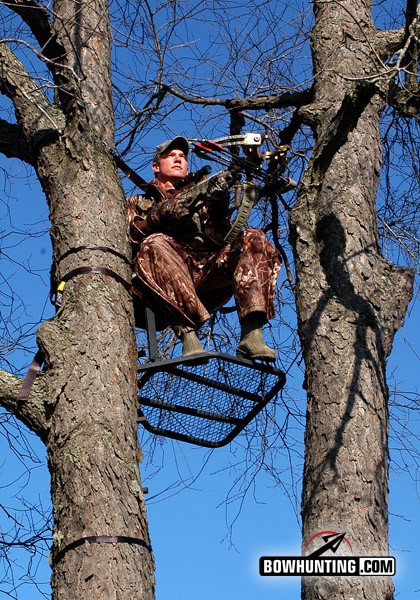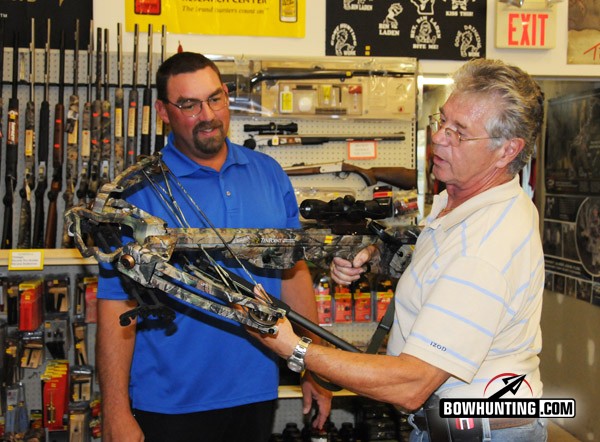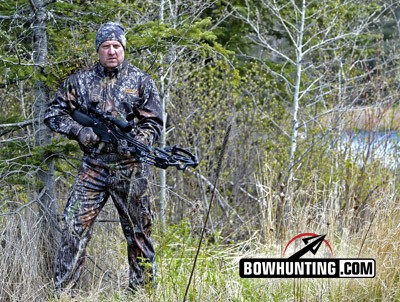LAST UPDATED: May 8th, 2015
Of the many fish, fowl and big-game mounts hanging in my home, the one most intriguing to friends and family is a wild boar my daughter Leah shot in Florida with a crossbow when she was 14.
Yep. A crossbow. And none of our guests cares. Rather than hear me talk about the differences between recurves, longbows, compounds and crossbows, they’d rather hear about a 175-pound wild pig, and how a teenage girl killed it with an arrow.
Unlike some bowhunters, our house-guests never sneer or ask how I could let my daughter hunt with a crossbow. They don’t call it Satan’s tool or a cross-gun. Nor do they claim it’s the No. 1 threat to “bowhunting as we know it.”
That last claim bothers me. How can crossbows pose a bigger threat to bowhunting than things like urban sprawl, shrinking access to hunting land, and declining hunter numbers? Most states are losing hunters every year, which makes hunters an increasingly declining minority in our communities and American society.
That’s why I see nothing wrong with states like Michigan, New York, Delaware, Nebraska, Georgia, Alabama, Tennessee, Virginia, Kentucky, Maryland, Pennsylvania, Louisiana, South Carolina and others allowing crossbows for at least part of their archery deer seasons.
Until 2002, the only states with that freedom were Ohio, Arkansas and Wyoming. As we look ahead to Fall 2011, nearly 30 states and provinces will allow crossbows for everyone during all or part of their regular big-game archery seasons; and others allow crossbows for older hunters, or during bear and turkey seasons.
I’d much rather see people hunting with crossbows than to watch hunting participation rates keep plunging. Still, I always encourage critics to tell me why they oppose crossbows, thinking maybe I’ve missed something in the discussion.
Unfortunately, the answers opponents keep giving are mostly faith-based accusations, not logical, factual criticisms. That made me think that maybe I wasn’t asking my questions the right way.
But then I came across the a 2005 study commissioned by the Kentucky Department of Fish and Wildlife, which hired Cornell University to study attitudes about expanding crossbow hunting for deer and turkeys. Over the years, Cornell has led the way in studying hunters, hunting trends and hunting participation rates. I assume they know more about asking questions than I do.
So, Cornell’s researchers asked opponents why crossbows shouldn’t be allowed during the regular archery season. Here’s the top two reasons they heard:
— “Crossbows are not bows,” 35 percent.
— “I do not want crossbows in the woods with me,” 15 percent.
I don’t see many facts in either statement; just unsubstantiated opinion.
If crossbows are not bows, what are they? True, the crossbow’s bow is mounted on a rifle stock, but it still uses bow-limbs and bow-strings to shoot arrows. In fact, the federal government defines crossbows as archery equipment, subjecting them to the same federal excise taxes as other bows.
In addition, the flight paths of a crossbow’s arrow far more resembles those of other bows, not any firearm. At 50 yards, a crossbow-launched arrow drops an average of about 39 inches, while an arrow from a compound bow drops about 46 inches. In other words, depending on which make and model you shoot, trajectories overlap.
Meanwhile, a bullet from an in-line muzzleloader sighted in 3 inches high at 50 yards won’t drop below 24 inches until traveling about 300 yards. A modern shotgun slug sighted dead-on at 50 yards won’t drop below 11 inches until traveling about 125 yards. And a bullet from a .30-06 rifle sighted in 2 inches high at 100 yards won’t drop below 50 inches until traveling about 500 yards.
Do crossbows require less practice to attain proficiency? Yes. But is that bad? In a society with less time for recreation and fewer places to practice, many folks cite “less practice, greater proficiency” as a plus.
The biggest so-called threat from crossbows is that they increase participation in archery season. That’s not a bad thing, is it? In Wisconsin, for example, since allowing archers 65 and older to hunt with crossbows in 2003, the state has sold 74 percent more archery licenses to people in that age bracket. While that might sound really impressive, in real numbers that’s 9,851 in 2002 and 17,135 in 2007. They’re not overrunning the woods.
Further, as other states study new crossbow hunters, it’s increasingly clear that nearly a third of them have never before used archery equipment. And nearly half of the new archers are age 50 or older. Even better, once they start hunting with crossbows, they typically keep hunting longer than other people their age. Some of us think that’s a good thing. It’s recruitment and retention.
Personally, I’ve hunted with compound bows since 1975 and with recurves before that. I don’t foresee using a crossbow to hunt elk or deer anytime soon. They’re clumsy to carry and maneuver through brush, making them difficult to use anywhere except a blind or tree stand. Still, if I could use a crossbow in December when cold weather sometimes makes it difficult to draw a compound bow, I’d try it. It sounds fun.
What matters more than my fun and personal choices, however, is the importance of expanding hunting opportunities for everyone in this era when hunter numbers are declining and deer herds are stable or climbing. Remember, for 60 years we’ve justified hunting as the most effective means of managing the public’s deer herd. And we’ve offered bowhunting as a safe, quiet, effective way to reduce deer herds in urban and suburban areas.
I worry that if we abando n those responsibilities out of spite for crossbows, the public might conclude our interests are too emotional and self-serving to support or take seriously. In turn, bowhunting itself would lose credibility and relevance.
Now that would be a legitimate threat to bowhunting.

 By
By 






